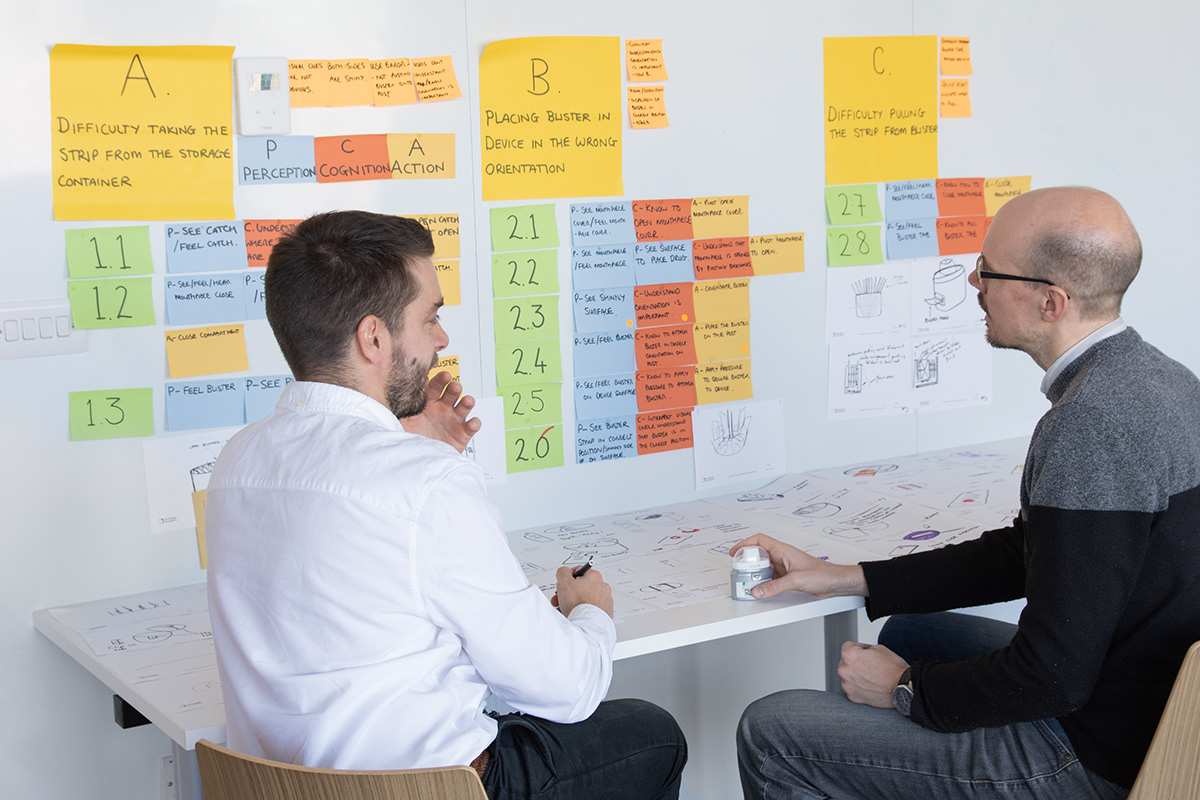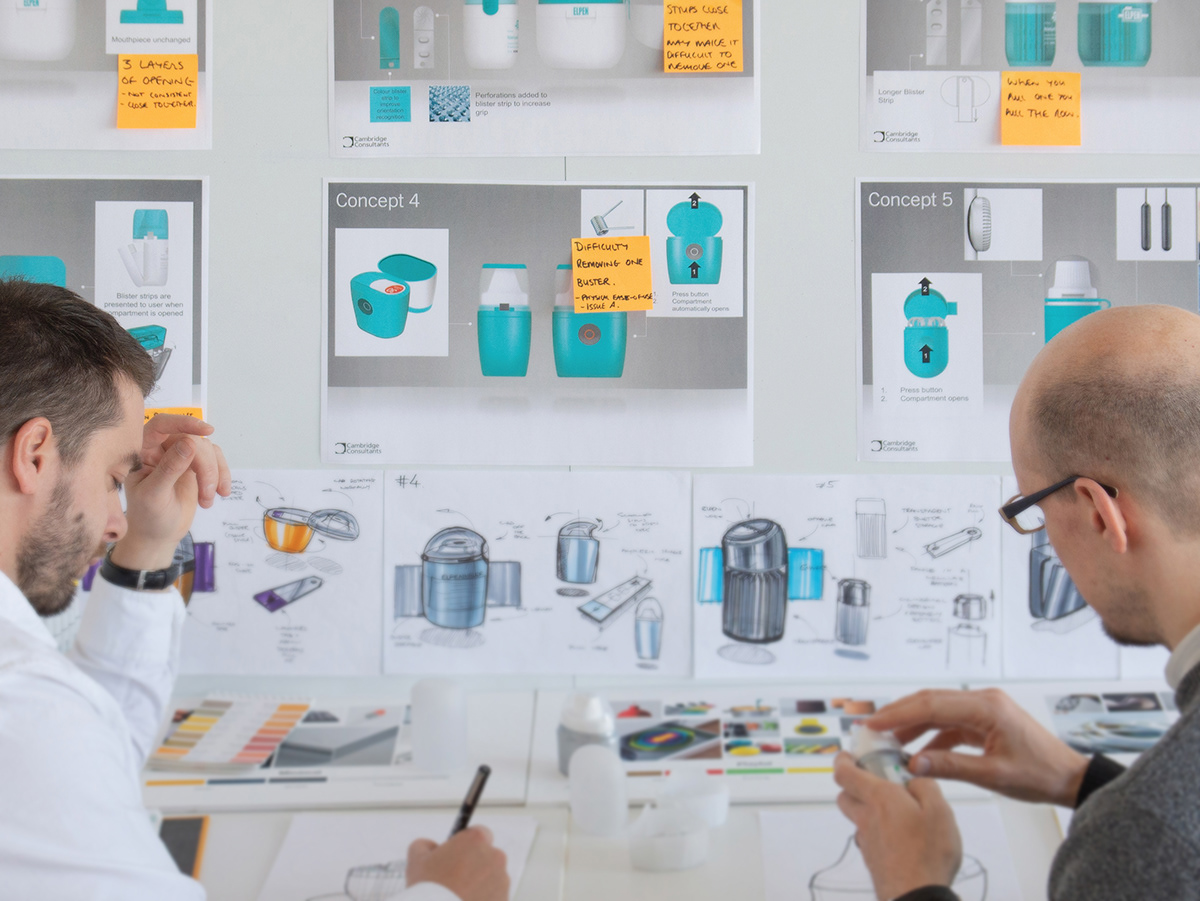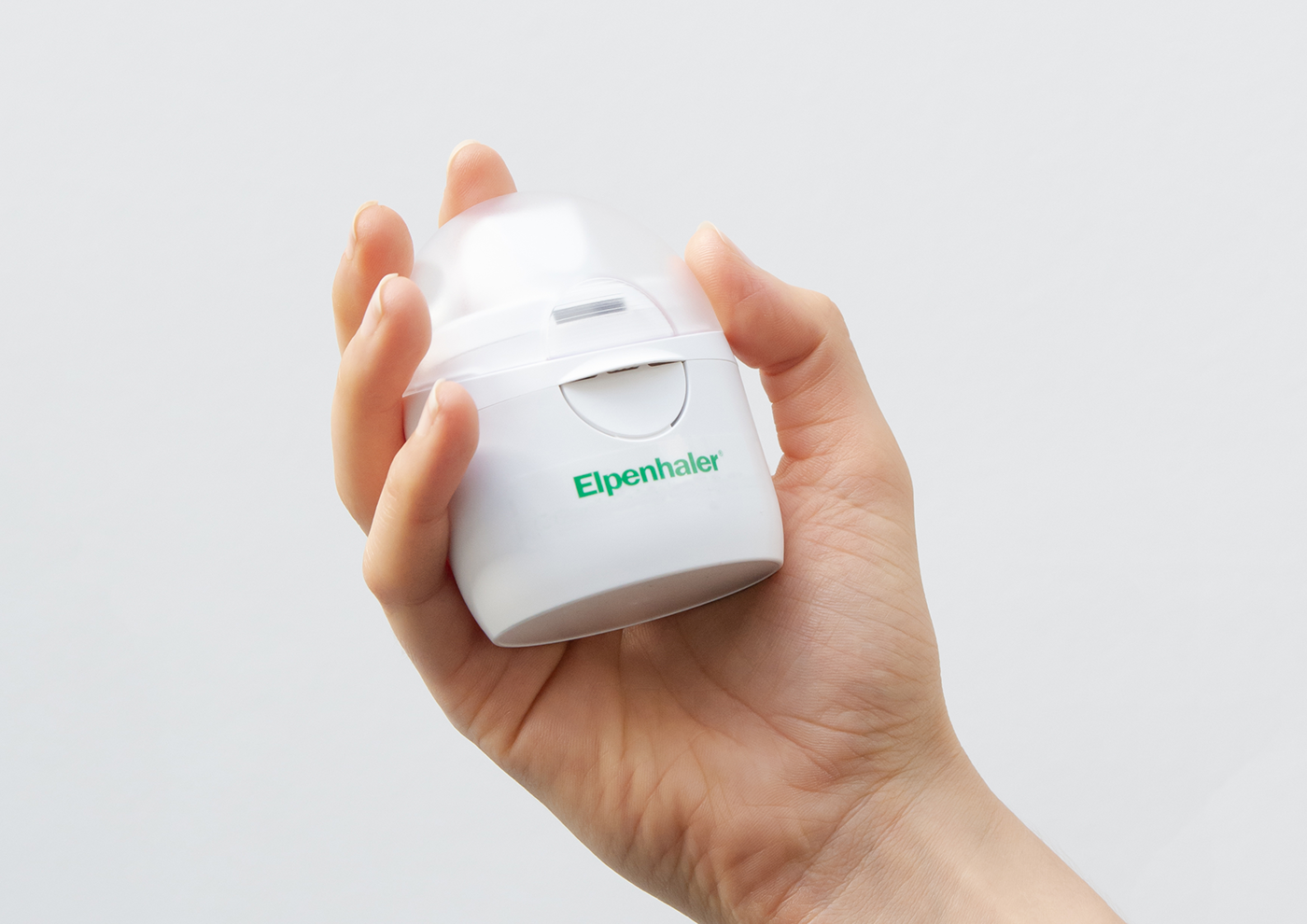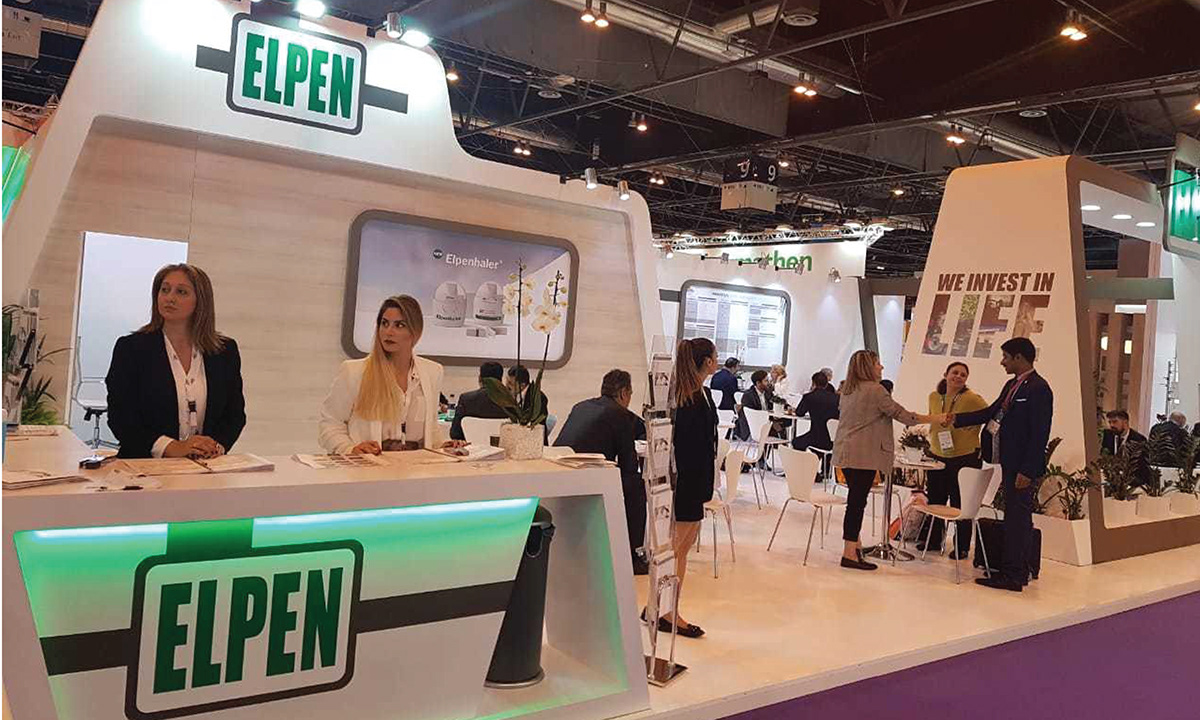
ELPEN approached Cambridge Consultants to partner in the re-design of their device.
The project started with meeting ELPEN’s commercial, regulatory and technical stakeholders to define the project scope: to update Elpenhaler®’s ‘look and feel’ to better align with their brand and make usability enhancements without changing the device’s performance characteristics such as operational steps and drug delivery performance.
Our Human Factors team worked to identify usability enhancements. We analysed the device’s use steps to gain a deeper insight into the root cause of possible use related errors. Subsequently, we prioritised high impact areas of enhancements. These comprise making the use-steps more intuitive by adding a visual marker to the blister strip and adding an embossed feature to the blister strip tap, improving grip for easier peel off.

Previous generation device
During a workshop with ELPEN we analysed Elpenhaler®’s design from numerous perspectives. There are many factors that affect the perceived value of an inhaler, from the way it looks, feels or even the way it fits within a patient’s lifestyle. We concluded that Elpenhaler®’s aesthetics did not convey the company’s brand essence - 'improving patient’s lives through innovative ideas'. We agreed a series of brand attributes which better described the ELPEN brand to inform the design of the look and brand experience for the next generation device.

After developing the usability enhancement ideas and defining the look and brand experience, our team explored a range of concepts through sketches and handling models. Concepts with different levels-of-change (mild to wild) were presented to ELPEN and to patients and health professionals for assessment, from which a single concept was selected.




Our designers and engineers collaborated closely during the detail design phase to balance design and functional trade-offs. Much of the refinement focussed on the cap and blister compartment opening functions, with the team aiming to find the balance between ease-of-use and robustness. As part of the engineering process we undertook finite element analysis, functional tolerance analysis and risk assessments including product failure modes and effect analysis (FMEA).

The selected concept offered a range of enhancements including a simplified user interface that was more intuitive and gave a higher quality feel. The selected direction was a modern yet friendly design with angular split lines cut into a pebble shape.




This content was originally posted on Cambridge Consultants' website. Cambridge Consultants develops breakthrough products, creates and licenses intellectual property and provides business consultancy in technology critical issues for clients worldwide. For more than 50 years, the company has been helping its clients turn business opportunities into commercial successes, whether they are launching first-to-market products, entering new markets or expanding existing markets through the introduction of new technologies.






